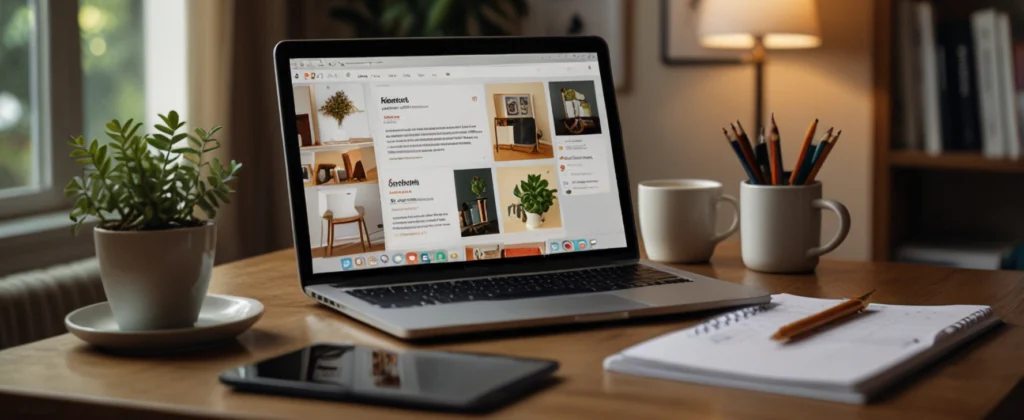
Are you ready to start freelancing but worried because you don’t have any client work to showcase yet? Don’t stress — you’re not alone. Countless successful freelancers began with zero experience and no portfolio, yet still landed paying clients. The secret? They built professional, skill-focused portfolios from scratch that proved their value before they ever got their first gig.
In this guide, you’ll learn exactly how to create a polished, professional-looking portfolio that grabs attention, builds trust, and helps you get hired faster. We’ll cover how to design impressive mock projects that showcase your abilities, format your portfolio so it looks credible and easy to navigate, and choose the right platforms to display your work to potential clients.
Your mission is simple: prove your skills — even without past clients — by creating strategic, high-quality examples that show you can deliver results. Follow these steps, and you’ll have a portfolio that turns “I’m just starting out” into “I’m ready to hire.” Let’s get started!
Affiliate Disclaimer: Please note that this article may contain affiliate links. This means if you make a purchase through one of these links, I may earn a small commission, at no extra cost to you. These commissions help support The Side Hustler Blog and allow me to continue providing valuable content.
What Exactly Is a Freelance Portfolio?
Your freelance portfolio is a collection of your best work. It shows your skills to potential clients. Think of it as your visual resume and your personal sales tool. Even if you are a complete beginner, a well-structured beginner freelance portfolio is very powerful.
A good portfolio can include:
- Mock projects (sample work you create)
- Case studies (if you have them, even from practice)
- Testimonials (once you get clients)
- Work history or background information (a brief overview of your skills)
- A clear list of the services you offer
A strong portfolio demonstrates what you can do. It’s better than just telling a client you have the skills. It gives them real proof.
Step 1: Choose Your Niche and Service
Before you can even begin to build a freelance portfolio, you need to decide what freelance service you will offer. This might seem odd, but defining your niche guides the work you create for your portfolio. Trying to do everything for everyone will only make your efforts weaker.
Consider services like these:
- Writing: This could be blog posts, website copy, email newsletters, or social media content.
- Graphic Design: Think about logos, social media posts, branding, or simple web graphics.
- Virtual Assistance: This includes administrative tasks, email management, research, or content scheduling.
- Proofreading or Editing: Reviewing documents for grammar, spelling, and clarity.
If you are still deciding on your path, I highly recommend reading my guide on Easy Freelance Side Hustles. It can help you find a service that fits your interests and current skills. This will make the next steps much easier for you.
Step 2: Create 2–3 Mock Projects
This is how you build a freelance portfolio with no experience. Mock projects are practice projects. You create them as if they were for a real client. They show off your skills, not your past client list. Treat them with the same care and professionalism you would a paid job.
Here are some examples of mock projects you can create for different freelance services:
- For Writers: Write 2-3 blog posts for a made-up wellness brand. Focus on different topics or writing styles.
- For Graphic Designers: Design a logo and a series of Instagram posts for a fictional local cafe or a sustainable fashion brand.
- For Web Designers/Developers: Build a simple one-page landing page for a made-up software tool.
- For Virtual Assistants: Create a sample social media content calendar for a small business. You could also draft a professional email sequence.
The goal of these freelance samples is to prove your skills. Don’t just tell a potential client what you can do. Show them with real examples.
Bonus Tip: Use AI tools to improve your work. For instance, Grammarly helps writers check for errors. Canva is great for creating professional graphic designs quickly, even for beginners.
Step 3: Choose Where to Host It
Many new freelancers think they need a complex, expensive website for their beginner freelance portfolio. This is not true when you are starting. There are many free or low-cost options. These are good enough for showcasing your freelance samples effectively.
Here are some great platforms to use:
- Google Drive folder: This is simple and easy to access. Create a well-organized folder with clear titles for each sample.
- Notion page: This is a versatile tool. You can build visually appealing pages to show your work. Include descriptions and visuals.
- Canva portfolio: Canva has a special portfolio feature. You can design and host a simple portfolio directly through their site.
- Journo Portfolio (for writers): This platform is for writers. It makes it very easy to display articles, blog posts, and other written freelance samples.
- Behance (for creatives): This is a popular platform for designers and artists. They can show their visual work here. It’s perfect for anyone in graphic design or visual arts.
As you gain more experience and earn more, you can always invest in a more personalized website later. Platforms like Carrd (for simple, one-page sites) or WordPress (for more complex blogs and portfolios) are good choices when you are ready to upgrade.
Step 4: Structure Your Portfolio Like a Pro
How you structure your freelance portfolio is as important as your freelance samples. A clear, easy-to-use layout helps clients quickly find what they need. It also helps them understand your value. Here is a simple, effective format for building a freelance portfolio:
- A Clear Headline: This should immediately tell clients who you are and how you help them. For example: “Freelance Content Writer for SaaS Startups” or “Graphic Designer for Small Business Branding.”
- Concise Bio: A short 2–3 line summary about you. Include your main skills and your unique approach. Keep it professional but also friendly.
- Work Samples: Show your 2–4 mock projects (or real work if you have any) clearly. Add a short description for each. Explain the project’s goal and your role in it.
- Services Offered: Use a bulleted list or a short paragraph. Outline the specific services you provide. Be clear about what you do.
- Contact Information or Call to Action (CTA): Make it easy for clients to reach you. Include your professional email address. Add links to your Upwork or Fiverr profile, or a simple contact form.
Remember to keep your portfolio short, visual, and easy to scan. Use formatting like headings, bullet points, and high-quality images. These break up text and make it easier to read.
Step 5: Add It to Your Profiles and Pitches
Once you create your freelance portfolio with no experience, you must share it everywhere! Your portfolio is useless if no one sees it. Make it easy for potential clients to find your work and understand what you offer.
Here are places where you should share your portfolio link:
- Freelance Job Platforms: Include the link in your profiles on sites like Upwork, Fiverr, or any other platforms you use to find freelance jobs.
- Your Social Media Bios: Add it to your professional social media profiles (LinkedIn, X, even Instagram if it’s relevant).
- Email Pitches to Clients: Always include your portfolio link in any direct email pitches or proposals you send to potential clients.
- Job Applications: When applying for remote positions or freelance gigs, make sure your portfolio is easy to find in your application materials.
Remember, your portfolio does not need to be perfect to start getting results. What matters most is that it clearly shows your skill, your effort, and your commitment to doing good work. It is a living document that you will update and improve as you gain more experience.
Need Inspiration? Check These Out:
Sometimes seeing what others have done can spark your own creativity. Here are some excellent resources and remote portfolio examples to give you ideas and guidance:
- Explore freelance portfolio examples on Behance for visual inspiration. This is especially good if you are in design or a creative field.
- Browse remote portfolio samples on Contently. These often show high-quality writing and content strategy portfolios.
FAQ: Building Your Freelance Portfolio
Here are some common questions about building a freelance portfolio, especially when you’re just starting out with no experience.
How many samples do I need in my portfolio?
For a beginner freelance portfolio, 2-3 strong, well-chosen samples are often enough. They show your abilities. Focus on quality, not just how many you have. As you gain experience, you can add more, aiming for 5-7 of your best pieces.
How often should I update my freelance portfolio?
You should update your portfolio often. As you finish new projects or learn new skills, replace older or less important samples with your freshest, strongest work. Try to review it at least every three months, or when you complete a major project.
Can I use personal projects or school assignments?
Yes, absolutely! If you have no experience, personal projects, made-up client work, or even good school assignments are great to include as freelance samples. The goal is to show what you can do, no matter how the work started.
What if my skills are still basic?
That is perfectly fine! Focus on showing the basic skills you have. Do this with confidence. As you learn more, your portfolio will get better. Start with services that match your current skill level. Then, keep building your expertise.
Should I create a separate portfolio for each service I offer?
If your services are very different (e.g., graphic design and content writing), it can be helpful to have separate, specialized portfolios. This allows you to customize your samples and messages for specific client needs. It makes your portfolio more effective for each type of freelance work.
Final Tips for Your Portfolio Journey
Starting a freelance career is a journey. Building a freelance portfolio is one of your first and most important steps. Keep these final tips in mind as you move forward:
- Don’t wait until you “feel ready” — start now. Trying for perfection too early can stop your progress. Your first portfolio won’t be your last, and it will improve as you work on it.
- Use free tools and platforms to save time and money. You do not need to spend a lot of money when so many great free resources are available.
- Update your portfolio regularly as you gain experience. As you complete more projects, even small ones, replace your mock samples with real client work. This shows your growth and real-world skills.
This takes work – but it’s worth it if you stick with it! You will absolutely see results if you dedicate yourself and apply these strategies consistently.
Need freelance job ideas to go with your newly built portfolio? Discover the top freelance jobs in 2025 →


